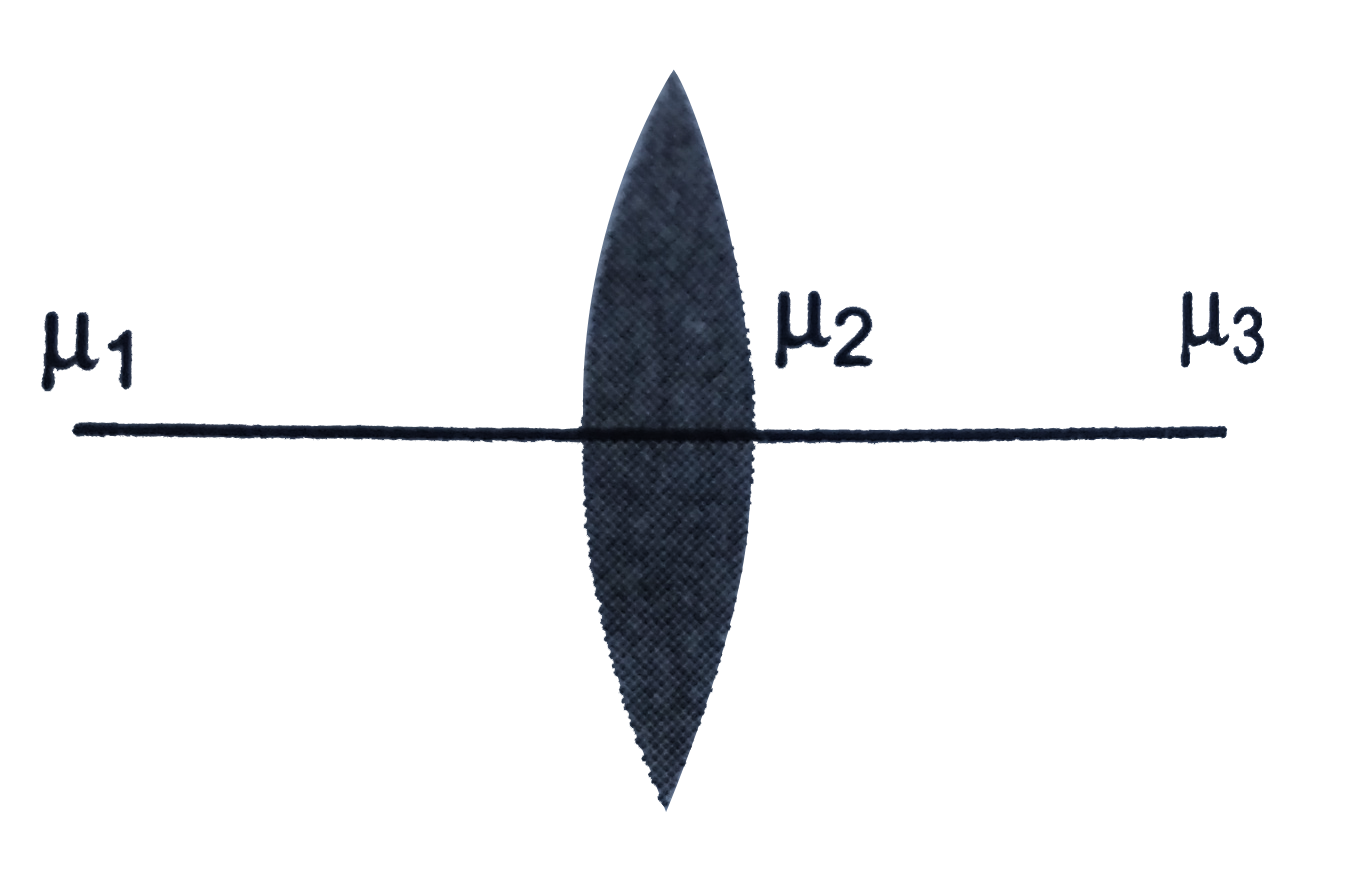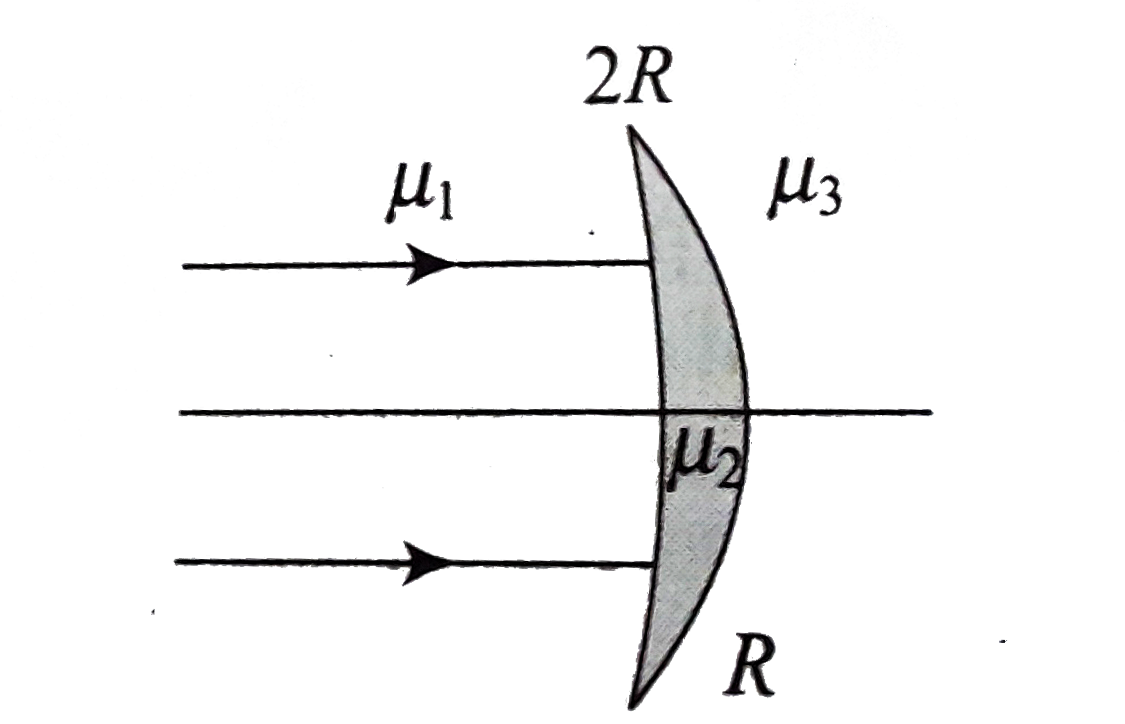The figure shows an equi-convex lens. What should be the condition of the refractive indices so that the lens becomes diverging? 
A
2μ3>μ1−μ2
B
2μ2<μ1+μ3
C
2μ2>2μ1−μ3
D
None of these
Video Solution
Text Solution
The correct Answer is:B
Refraction from first surface,
μ2v1−μ1∞=μ2−μ2+R
Refraction from second surface,
μ3f−μ2v1=μ3−μ2−R , (as v2=f)
Adding these two equations, we get
μ3f=μ2−μ1R−μ3−μ2R
Lens becomes diverging if f is negative or
μ3−μ2>μ2−μ1
or μ3+μ2>2μ2
Same result is obtained if parallel beam of light is
incident from RHS.
|
Topper's Solved these Questions
- REFRACTION OF LIGHTBOOK - DC PANDEYCHAPTER - REFRACTION OF LIGHTEXERCISE - Single Correct Option
3 Videos
- REFRACTION OF LIGHTBOOK - DC PANDEYCHAPTER - REFRACTION OF LIGHTEXERCISE - more than one correct option
1 Video
- REFRACTION OF LIGHTBOOK - DC PANDEYCHAPTER - REFRACTION OF LIGHTEXERCISE - Subjective Questions
8 Videos
- REFLECTION OF LIGHTBOOK - DC PANDEYCHAPTER - REFLECTION OF LIGHTEXERCISE - Subjective
9 Videos
- SEMICONDUCTORSBOOK - DC PANDEYCHAPTER - SEMICONDUCTORSEXERCISE - Subjective
12 Videos
Similar Questions
Knowledge Check
Figure, shows a concavo-convex lens μ2. What is the condition on the refractive indiecs so the at the lens is diverging?
 A2μ3<μ1+μ2B2μ3>μ1+μ2Cμ3>2(μ1−μ2)DNone of these
A2μ3<μ1+μ2B2μ3>μ1+μ2Cμ3>2(μ1−μ2)DNone of theseThe power in dioptre of an equi-convex lens with radii of curvature of 10cm and refractive index 1.6 is
A+12B+18C+1.2D+1.8The radius of curvature of the curved surface of a plano-convex lens is 20cm. If the refractive index of the material of the lens be 1.5, it will
A30cmB50cmC20cmD40cm
A convex lens is a diverging lens.
View SolutionA lens behaves as converging lens in air and a diverging lens in water (n=43) the condition on the value of refractive index n of the material of the lens ?
View SolutionWhat is the other name of a diverging lens ?
View SolutionThe radius of curvature of the curved surface of a plano-convex lens is 20cm. If the refractive index of the material of the lens be 1.5, it will
View SolutionA plano-convex lens is made of refractive index of 1.6. The focal length of the lens is
View Solution

